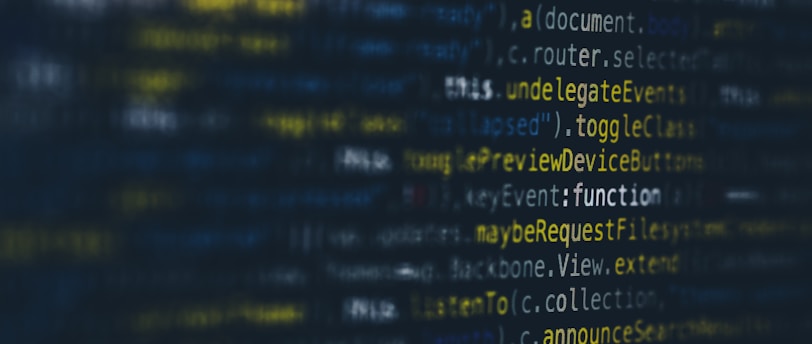Safeguarding Your AI: Essential Security Considerations for LLMs in Production
In today's rapidly evolving technological landscape, many organizations are racing to integrate Large Language Models (LLMs) into their operations. While the benefits of LLMs are undeniable, it's crucial to approach their deployment with a keen eye on security. This blog post explores the critical security considerations for LLMs in production environments and provides actionable strategies to protect your AI systems.
9/13/20243 min read


Understanding the Threat Landscape
Before diving into mitigation strategies, it's essential to grasp the potential vulnerabilities of LLMs in production:
1. Prompt Injection Attacks: Malicious actors can manipulate LLMs by providing carefully crafted inputs, potentially causing the model to perform unintended actions or reveal sensitive information.
2. Data Leakage: LLMs, especially those with access to various tools and databases, may inadvertently expose confidential data in their outputs.
3. Code Execution Risks: In non-isolated environments, LLMs might execute harmful code or access system data beyond their intended permissions.
4. Model Inversion Attacks: Fine-tuned LLMs can potentially expose sensitive information from their training data, leading to privacy breaches.
5. Biased or Inappropriate Outputs: LLMs can generate biased, discriminatory, or inappropriate content, which can damage your brand reputation, especially in customer-facing applications.
Implementing Robust Security Measures
To protect your LLM systems in production, consider the following strategies:
1. Establish Comprehensive Guardrails
Implement a multi-layered approach to safeguard your LLM:
- Input Validation: Develop robust mechanisms to sanitize and validate all inputs to the LLM, preventing adversarial inputs and prompt injection attacks.
- Output Scanning: Implement systems to scan LLM outputs for anomalous behaviors, ensuring that responses are safe and appropriate before being sent to users.
- Content Filtering: Utilize advanced content filtering techniques to screen for and block potentially harmful or sensitive information in LLM outputs.
2. Embrace Containerization and Isolation
Leverage containerization technologies to create a secure environment for your LLM:
- Isolated Runtime: Run your LLM in a containerized environment to prevent unauthorized access to other parts of your infrastructure or data.
- Restricted Permissions: Implement the principle of least privilege, ensuring that the LLM has access only to the resources it absolutely needs to function.
- Secure API Gateways: Use API gateways to manage and monitor all interactions with your LLM, providing an additional layer of security and control.
3. Implement Continuous Monitoring and Anomaly Detection
Stay vigilant with real-time monitoring of your LLM system:
- Behavioral Analysis: Employ advanced monitoring tools to detect unusual patterns or outputs from the LLM that may indicate an attack or malfunction.
- Logging and Auditing: Maintain comprehensive logs of all LLM interactions, enabling thorough audits and forensic analysis if needed.
- Alerting Systems: Set up automated alerts to notify your security team of potential security incidents or anomalous behaviors.
4. Develop a Rapid Response Protocol
Be prepared to act swiftly in case of a security incident:
- Incident Response Team: Establish a dedicated team trained to handle LLM-specific security issues.
- Rollback Mechanisms: Implement systems that allow for quick rollback or updates to models without significant downtime.
- Communication Plans: Develop clear communication protocols to inform stakeholders and users in the event of a security breach or major issue.
5. Prioritize Data Privacy and Compliance
Ensure your LLM deployment adheres to data protection regulations and best practices:
- Data Minimization: Only provide the LLM with the minimum amount of data necessary to perform its tasks.
- Encryption: Implement strong encryption for data at rest and in transit.
- Regular Audits: Conduct periodic privacy impact assessments and security audits of your LLM systems.
6. Invest in Ongoing Training and Awareness
Foster a security-conscious culture within your organization:
- Employee Education: Provide regular training sessions on LLM security risks and best practices.
- Simulated Attacks: Conduct "red team" exercises to test your LLM's security measures and your team's response capabilities.
- Stay Informed: Keep abreast of the latest developments in LLM security and adjust your strategies accordingly.
Conclusion
As LLMs become increasingly integral to business operations, the importance of robust security measures cannot be overstated. By implementing comprehensive guardrails, embracing isolation techniques, maintaining vigilant monitoring, and fostering a security-first culture, organizations can harness the power of LLMs while mitigating associated risks.
Remember, security is not a one-time effort but an ongoing process. Regularly reassess your security measures, stay informed about emerging threats, and be prepared to adapt your strategies as the LLM landscape evolves.
By prioritizing security in your LLM deployment, you're not just protecting your data and systems – you're building trust with your users and stakeholders, ensuring the long-term success of your AI initiatives.
#AISecurityInProduction #LLMDeployment #SecureAI #DataProtection #AIInnovation
Follow us on other platforms.
Specializing in software consultancy, AI consultancy, and business strategy
We are just a mail away!
© 2024. All rights reserved.
